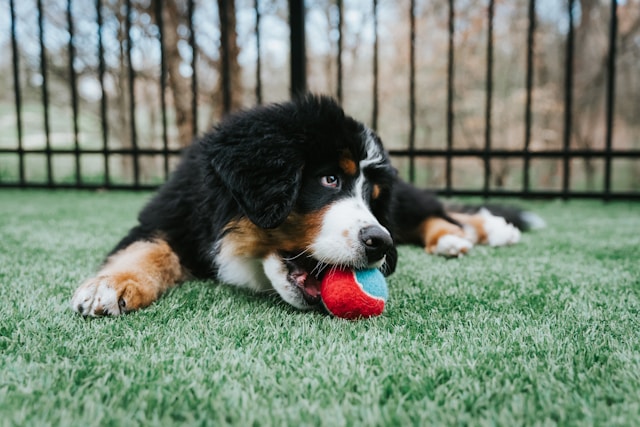Keeping pets entertained and active indoors is essential, especially during inclement weather or when outdoor play isn’t an option. Indoor playtime can help prevent boredom, reduce stress, and provide valuable physical and mental stimulation for both dogs and cats. This guide covers a variety of engaging activities tailored to each pet’s needs, ensuring they remain happy and healthy even when confined indoors.
1. Engaging Activities for Dogs
1.1. Interactive Toys
- Puzzle Toys: Puzzle toys challenge your dog to solve problems in order to access treats or kibble. These toys stimulate your dog’s mind and keep them occupied. Examples include treat-dispensing balls and puzzle feeders.
- Kong Toys: Fill a Kong with peanut butter, treats, or frozen food to create a long-lasting activity that keeps your dog engaged and satisfied.
- Tug Toys: Interactive tug-of-war toys provide physical exercise and strengthen the bond between you and your dog.
1.2. Indoor Agility
- Agility Course: Set up a mini agility course using household items like chairs, broomsticks, and cushions. Create jumps, tunnels, and weave poles to challenge your dog’s agility and coordination.
- DIY Obstacles: Use items such as cardboard boxes or hula hoops to create makeshift obstacles that your dog can navigate.
1.3. Hide and Seek
- Treat Hide and Seek: Hide treats or favorite toys around the house and encourage your dog to find them. This game taps into their natural hunting instincts and provides mental stimulation.
- Person Hide and Seek: Hide in different rooms and call your dog to find you. This activity not only stimulates their mind but also provides physical exercise.
1.4. Training Sessions
- Trick Training: Teach your dog new tricks or reinforce existing ones. Training sessions can be a fun way to engage your dog’s mind and strengthen your bond.
- Obedience Training: Practice basic commands such as sit, stay, and come. Regular training helps maintain good behavior and provides mental stimulation.
1.5. Sensory Games
- Scent Games: Use scent trails or hidden treats to engage your dog’s sense of smell. Create a scent trail using a treat or piece of food and let your dog follow it.
- Sound Toys: Introduce toys that make sounds or squeak to capture your dog’s attention and provide auditory stimulation.
2. Engaging Activities for Cats
2.1. Interactive Toys
- Feather Wands: Feather wands or fishing pole toys engage your cat’s natural hunting instincts and provide exercise. Move the wand to simulate the movement of prey and encourage your cat to pounce and chase.
- Laser Pointers: Laser pointers are great for interactive play. Move the laser around to encourage your cat to chase and pounce. Always end the game by allowing your cat to catch a toy to avoid frustration.
2.2. Climbing and Scratching
- Cat Trees: Provide vertical space with cat trees or shelves. Cats love climbing and observing their environment from high vantage points.
- Scratching Posts: Ensure your cat has access to scratching posts or pads to satisfy their natural scratching behavior and prevent furniture damage.
2.3. Puzzle Feeders
- Food Puzzles: Use puzzle feeders or treat-dispensing toys to make mealtime more engaging. These feeders encourage your cat to work for their food, providing both mental stimulation and slow feeding.
- DIY Puzzles: Create simple puzzles by hiding treats in cardboard boxes or paper bags. Your cat will enjoy figuring out how to get to the treats.
2.4. Hide and Seek
- Toy Hide and Seek: Hide your cat’s favorite toys or treats around the house and let them search for them. This game taps into their natural hunting instincts and provides mental stimulation.
- Box Play: Place boxes or paper bags around the house and encourage your cat to explore and hide in them. Cats love the enclosed spaces and will enjoy playing with the boxes.
2.5. Training and Enrichment
- Clicker Training: Use clicker training to teach your cat simple tricks or commands. Positive reinforcement can help your cat learn new behaviors and tricks.
- Enrichment Activities: Rotate toys and introduce new ones regularly to keep your cat’s environment stimulating and interesting.
3. Creating a Fun Indoor Environment
3.1. Safe and Comfortable Spaces
- Cozy Spots: Provide cozy and comfortable resting spots for your pets to relax and unwind. Ensure these areas are away from high-traffic areas to give them a sense of security.
- Safe Play Area: Designate a safe space for playtime that is free from potential hazards. Remove breakable items and ensure the area is pet-proofed.
3.2. Routine and Consistency
- Scheduled Playtime: Establish a routine for playtime to provide consistency and help your pets anticipate and look forward to their indoor activities.
- Variety: Introduce a variety of activities and toys to keep your pets engaged and prevent boredom.
3.3. Bonding and Interaction
- Quality Time: Spend quality time interacting with your pets during playtime. This strengthens your bond and provides emotional support.
- Positive Reinforcement: Use treats and praise to encourage positive behavior and reinforce playtime activities.
4. Conclusion
Engaging your dogs and cats in indoor activities is essential for their physical and mental well-being. By incorporating interactive toys, puzzle feeders, and creative play ideas, you can keep your pets entertained and happy even when stuck indoors. Creating a stimulating environment and maintaining a consistent playtime routine will help prevent boredom and strengthen the bond between you and your furry friends. With a little creativity and effort, indoor playtime can be both fun and fulfilling for your pets, ensuring they remain healthy and happy.











Leave a Reply